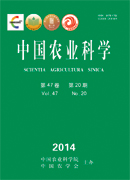-
Detection and Analysis of Resistance Genes in Quinolone-Resistant Escherichia coli Isolates from Different Livestocks in Xinjiang
- NAN Hai-chen, DI Li-na, XIA Li-ning
-
Scientia Agricultura Sinica. 2014, 47(20):
4096-4108.
doi:10.3864/j.issn.0578-1752.2014.20.018
-
 Abstract
(
450 )
Abstract
(
450 )
 HTML
(
1 )
HTML
(
1 )
 PDF (2790KB)
(
487
)
PDF (2790KB)
(
487
)
 Save
Save
-
References |
Related Articles |
Metrics
【Objective】The objective of this study is to investigate the prevalence and characteristics of plasmid mediated quinolone resistance (PMQR) determinents in quinolone-resistant E. coli from different animal origins in Xinjiang, and their coexistence with the major β-lactamases and 16s rRNA methylation enzyme genes. 【Method】 Polymerase chain reaction (PCR) was used to detect PMQR (qnrA, qnrB, qnrC, qnrD, qnrS, qepA, oqxA, oqxB, aac(6’)-Ib-cr), b-lactamase gene (blaTEM, blaCTX-M, blaSHV, blaKPC, blaCMY-2, blaLAP-1) and 16S rRNA (armA, rmtB) genes in 79 strains from pigs, 8 strains from cattle and 96 strains from sheep quinolone-resistant (ciprofloxacin, norfloxacin, enrofloxacin) E. coli. The positive strains were performed by using DNA sequencing to determine the purpose of the belt.Minimal inhibitory concentrations (MICs) of the related antibiotics to these isolates carrying the β-lactamase and 16S rRNA methylase genes,were tested and the relationship between the genotype and resistant phenotype was analyzed.【Result】The results showed that the qnrS (6.33%, 5/79), aac(6')-Ib-cr (5.06%, 4/79), oqxA (44.3%, 35/79), oqxB (50.6%, 40/79) were main PMQR determinants, blaTEM (100%, 79/79) was main β-lactamase genes and rmtB (3.80%, 3/79) was main16S rRNA methylase genes in E. coli from pigs; the qnrS (12.50%, 1/8), oqxA (12.5%, 1/8), oqxB (12.5%,1/8), aac(6')-Ib-cr (12.50%, 1/8) and qepA (12.50%, 1/8) were main PMQR determinants, the blaTEM (100%, 8/8) and blaSHV (12.50%, 1/8) were main β-lactamase genes in E. coli from cattle; the qnrS (6.25%, 6/96), oqxA (33.3%, 32/96) oqxB (38.5%, 37/96) and aac(6')-Ib-cr (22.91%, 22/96) were main PMQR determinants, the blaTEM (100%, 96/96) and blaCTX-M (2.08%, 2/96) were main β-lactamase genes and the rmtB (2.08%, 2/96) was main16S rRNA methylase genes in E. coli from sheep. The qnrA, qnrB, qnrC, qnrD, blaKPC, blaCMY-2 and blaLAP-1 genes were not detected in any of the isolates. The co-harboring of resistant genes was common among these E.coli from different animals, and the resistant phenotype of E.coli from different animal sources carrying β-lactam enzyme and 16S rRNA methylase genes has some correlation.【Conclusion】The PMQR determinants were existed in E. coli from different animals in Xinjiang, and they coexist with the main b-lactamase and/or 16s rRNA methylation enzyme genes. In addition, the PMQR determinants and β-lactamase genes were firstly detected in the E. coli from sheep.









